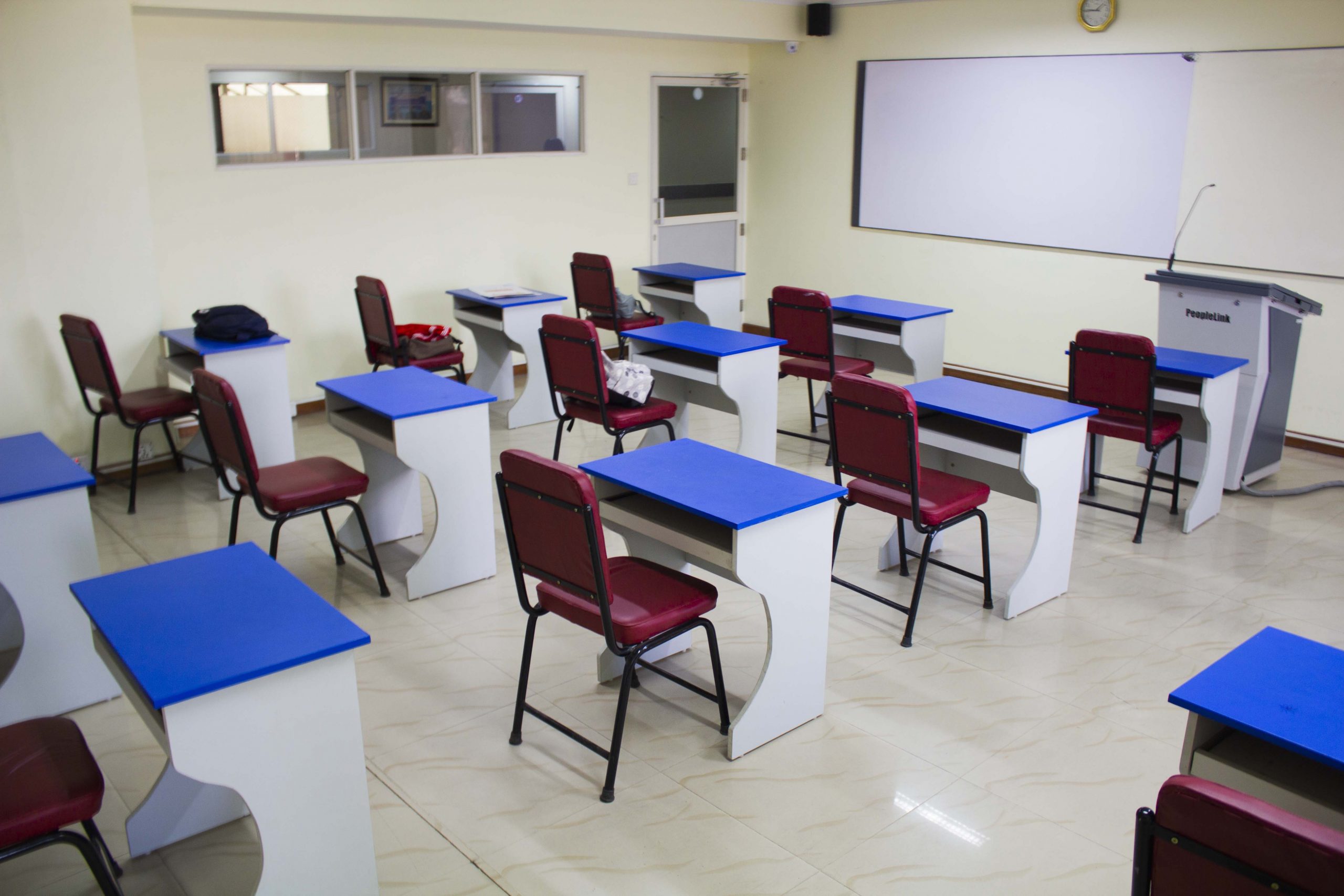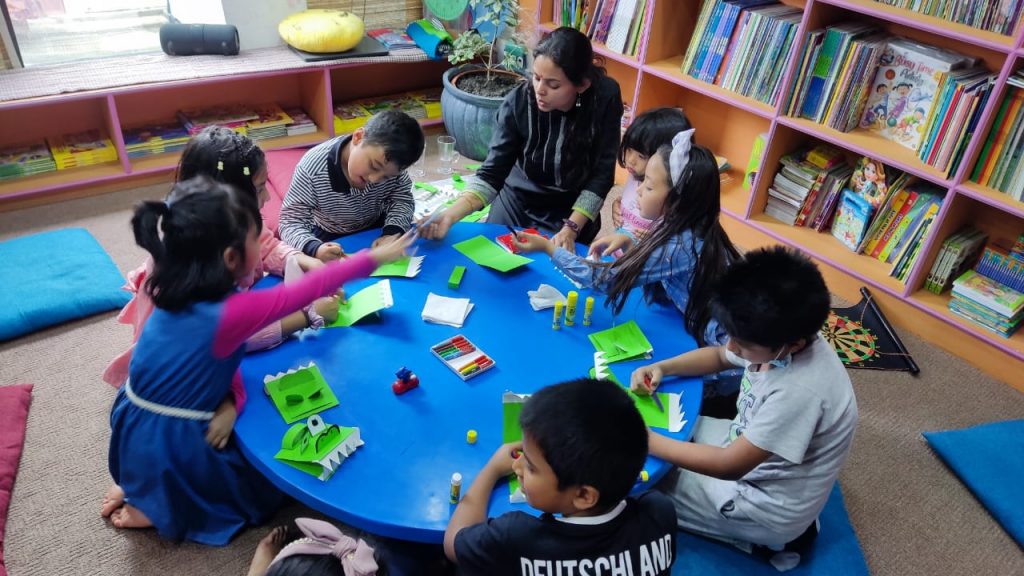
Climate change poses a significant challenge both in the present and the future. While Nepal’s greenhouse gas emissions account for less than 1 per cent of the global total, the impact of climate change on the country is disproportionately severe.
With diminishing snowfall in the Himalayas and rising global temperatures, the effects are palpable. But just knowing about climate change issues online is not enough.
Investments in Nepal often prioritise infrastructure development, post-disaster recovery, and mitigation efforts. While these are undoubtedly crucial, there is a notable gap when it comes to prioritising climate change education. Acknowledging that a joint effort is being made to take the education and importance of climate change and its adaptive measures to the school levels and younger generation.
The project aims to equip Nepali students with the knowledge and skills needed to navigate the challenges of climate change and contribute to a sustainable future.
The project has been titled Strengthening a Climate Smart, Green and Resilient Education System in Nepal.
“It’s not merely a buzzword but a necessity for communities to thrive amidst changing environmental conditions. This realisation has been eye-opening and has underscored the urgency of action,” says Monica Lama, Focal Point for Education for Sustainable Development (ESD) at UNESCO.
How the project came to life

The project’s seeds can be said to have been laid back in 2020 during the Transforming Education Summit which highlighted the urgent need to include climate education in school curricula, with sufficient contextual depth.
Efforts to address this gap have gained momentum, with discussions initiated last year in collaboration with the Norwegian Embassy. Norway’s early involvement in the Greening Education Partnership paved the way for fruitful exchanges and collaborations.
“The impact of climate change on education is profound, with access to schools often disrupted by extreme weather events such as floods and droughts. School-going adolescents, particularly in vulnerable communities, face significant challenges due to missing school days and the resultant disruption in their learning,” said Nikita Dhawan, Second Secretary for Gender Equality and Education at the Norwegian Embassy.
The prioritisation of education and climate change adaptation is crucial for addressing the challenges posed by environmental degradation and ensuring a sustainable future.
“The lack of awareness is widespread, with approximately 90 per cent of surveyed countries, reporting similar gaps in knowledge,” she says.
She further says, “Reports from organisations like Plan International and UNICEF highlight the urgent need for better preparation and planning to address the climate crisis’s impact on education. A 2021 survey by UNICEF revealed that over 1 billion children worldwide are at risk due to climate change-related hazards.” This, in addition to the internal policy notes, guided them to form this project in Nepal.
This first and unique partnership involves the collaboration of UNICEF and UNESCO. It is also one of the unique approaches taken in the South Asian nations. It emphasises the importance of holistic approaches to education. It also includes working closely with the Centre for Education and Human Resource Development (CEHRD) and Curriculum Development Centre (CDC) to seamlessly integrate the projects into the schools, along with the already-active government interventions and initiatives.
“The project has already been adopted and recognised by the ministry, signalling a commitment to integrating climate education into the broader education system. The focus is on ensuring that this integration is seamless and effective, avoiding duplication and fragmentation. Moving forward, we will focus on the same,” says CEHRD Director Ganesh Paudel.
Prakriti Gurung, Science officer & Team Lead for the Natural Science Unit in Nepal at UNESCO, also adds, “Collaboration with the World Food Programme (WFP) and the Food and Agriculture Organization (FAO), and integration of their expertise and resources, will further enhance our efforts.”
“Over eight months, a comprehensive framework was developed, centred around four pillars: physical safety of schools, curriculum development, integration with government initiatives, and capacity-building,” she says.
The approach

Speaking on the approach, Lama explains, “During the inception phase, starting from December, will focus is on laying the groundwork for effective implementation, ranging from global issues to local and regional contexts. We aim to avoid duplication of resources and ensure optimal utilisation by engaging in thorough discussions to map out policies, curriculum enhancements, and research initiatives. Working closely with the working committee formed by the government will also be crucial here.”
Gurung adds, “We aim to identify several workable areas, model schools and local municipalities where detailed consultations will be conducted. In selecting model schools, we aim for diversity, including examples from areas outside Kathmandu, particularly in the peripheries and beyond the valley.”
“Instead of reinventing the wheel, we seek to identify existing successful climate action programmes and strategies and build upon them. By learning from past experiences and leveraging proven methodologies, we can streamline our efforts and maximise impact,” she adds.
Lama also briefed that they will have to take a three-pronged approach to encompass a comprehensive strategy.
She says, “First is curriculum enhancement. In this, we are collaborating with CDC to expand the curriculum to include climate-related topics in various subjects. Training sessions for textbook writers ensure that relevant content is accurately incorporated. This approach offers flexibility, providing suggestions rather than strict guidelines, and broadens the scope from environmental studies to encompass social sciences.”
“Second is teacher training. This we recognised as the need to bolster teachers’ confidence in teaching climate change, specialised training programs and handbooks are being developed. The emphasis is on integrating climate resilience across subjects rather than introducing an additional burden,” she adds.
So far the project aims to bring a comprehensive five-day module designed to equip educators with the same.
The third is, she says, “Greening schools initiative that looks at selected schools into model green schools, this initiative extends beyond physical greening to incorporate agricultural practices and cultural knowledge with the school premises.”
Topics to cover

Climate change is a complex issue that intersects with various fields, including science, economics, politics, sociology, and ethics. Climate change education promotes interdisciplinary learning, fostering critical thinking, problem-solving skills, and a holistic understanding of the interconnected nature of environmental challenges.
By instilling knowledge, values, and skills related to climate change, education contributes to building a more sustainable future for current and future generations. Investing in climate change education is essential for fostering a global culture of environmental stewardship and ensuring the health and well-being of the planet and its inhabitants.
Education about climate change encourages individuals to make environmentally conscious lifestyle choices, such as reducing energy consumption, minimising waste, conserving water, and supporting eco-friendly products and services. These collective actions can significantly impact reducing carbon footprints and mitigating climate change.
Schools that have already undergone interventions from various organisations and initiatives demonstrate a heightened awareness of climate change among students and staff. Local authorities are increasingly open to integrating climate education into school curricula, recognising the importance of nurturing climate-resilient communities.
“Global Partnership for Education (GPE) defined activities and progress are focused on promoting clean/green energy through the utilisation of renewable sources and their integration into schools. Additionally, botanical labs are established to facilitate organic farming, contributing to the reduction of the carbon footprint,” adds Medinee Prajapati, environment specialist at CEHRD.
But, with this particular project, one of the focus areas will be on integrating climate education from primary to secondary levels, encompassing grades 1 to 10, underscores the comprehensive approach being taken.
At the primary level (grades 1 to 3), the curriculum should lay the foundation. As students progress to higher grades, the curriculum can integrate climate-related topics into various subjects such as science, social studies, and language arts. Secondary schools (grades 4 to 10) can further build upon this foundation by encouraging students’ initiative through eco clubs and extracurricular activities, fostering a sense of responsibility and agency.
The impacts sought

One crucial aspect of this preparation is investing in the children. “They are the future custodians of the planet, and shaping their understanding and habits early on is paramount.”
Paudel says, “One example of similar initiatives that can make a difference is the effects Open Defecation Free (ODF) areas where children have understood not to defecate outside, they feel more shy and reserved about it, in comparison.”
By instilling eco-conscious habits in children and involving parents and communities in the process, we can create a ripple effect of positive change that extends beyond individual households to benefit the environment, he adds.
The upcoming endorsement of a new concept note underscores the commitment to advancing climate education initiatives through strategic collaboration with organisations.
Paudel gives insights on the impact, “The scale of impact of this project is indeed significant, with approximately 600,000 individuals, including parents, teachers, and members of the Parents Teachers Association, that can be directly reached out. This presents a tremendous opportunity to create widespread awareness and instil sustainable habits not only within schools but also at diploma levels and other educational projects.”
The project, Lama says, is moving forward with a three-year timeline in mind, it is essential to ensure that the initiatives implemented have a lasting impact beyond this period. The updating of greening school guidelines represents a significant step forward in promoting environmental sustainability within the education sector.
Over the past decade, there has been a significant shift in awareness and discourse surrounding climate change in Nepal. The country has shown a vibrant community of youth climate activists who are both active and influential. They say dedication and passion drive positive change, advocating for policies that prioritise sustainability and resilience.
“There is a need to produce more climate change advocates and implementors. This involves fostering a culture of environmental stewardship and activism among students and communities. By empowering individuals to become advocates for climate action, we can amplify the impact of our efforts and create a groundswell of support for sustainable practices,” Paudel says.
“And it starts with simple actions like encouraging recycling, reducing energy consumption, and fostering a connection with nature,” Dhawan adds.
The goal is to establish 100 green schools annually by 2032, this initiative demonstrates a commitment to scaling up efforts and making greening practices a standard part of school operations. While the initial years may prioritise raising awareness about environmental issues, the latter years should emphasise the development of skills and attitudes that lead to sustainable practices and meaningful decision-making and actions.
“Ultimately, the objective of climate education goes beyond classroom learning. Students should be empowered to implement what they’ve learned in their daily lives and actively engage in climate resilience initiatives and projects. Children are powerful agents of change, and by informing and empowering them, they can inspire awareness and action within their communities.” Gurung restates.
“However, this responsibility doesn’t solely rest on the shoulders of educators or policymakers. Parents and communities play a pivotal role in nurturing environmentally conscious behaviours in children,” Lama concludes.
The post Today for tomorrow, climate change adaptation education to be integral part of the schools soon appeared first on OnlineKhabar English News.
Comments
Post a Comment